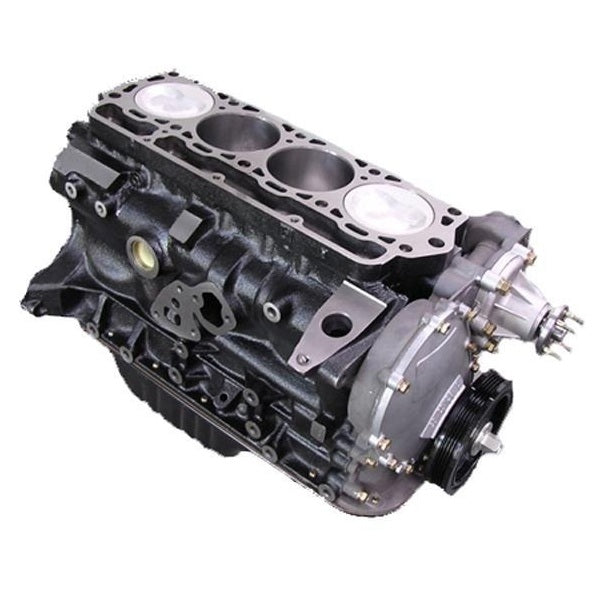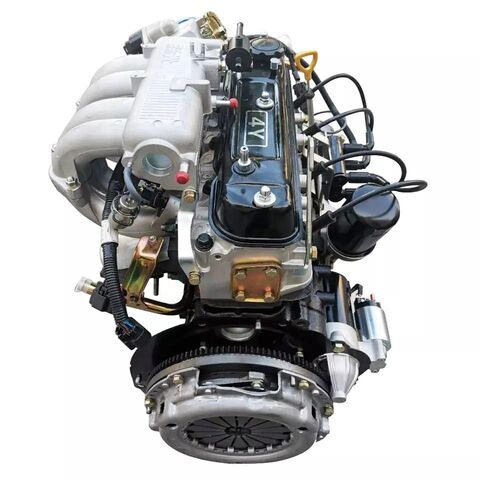How the 4Y Engine Contributes to a Smooth and Powerful Driving Experience
Why the Engine Is the most effective Selection for Performance and Performance in Your Automobile
The engine stays a critical element in automobile style, mainly because of its significant influence on both efficiency and efficiency. As developments in innovation make it possible for smaller sized engines to supply impressive power while optimizing gas economic situation, the integration of attributes such as turbocharging and crossbreed systems ends up being significantly vital. These advancements not only improve driving experience however also address ecological worries. The inquiry occurs: exactly how do these elements coalesce to redefine our understanding of vehicle performance? Exploring this balance discloses deeper understandings right into the future of engine style.
Recognizing Engine Types
Comprehending the different types of engines is important for enhancing performance and efficiency in automotive design. The key engine types include inner burning engines (ICE), electrical engines, and hybrid systems, each offering distinct benefits and constraints.
Interior combustion engines, which can be additional categorized right into fuel and diesel versions, rely on the combustion of gas to generate power. Gas engines commonly provide higher RPMs and better velocity, while diesel motor are understood for their torque and fuel efficiency, making them perfect for heavy-duty applications.
Electric engines, on the various other hand, use electric motors powered by batteries or gas cells. They provide instantaneous torque distribution, resulting in smooth velocity and reduced emissions. The performance of electric engines is considerably more than that of ICEs, making them a prominent choice for eco-conscious customers.
Hybrid systems incorporate both inner combustion and electrical engines, leveraging the toughness of both innovations. They optimize gas usage by utilizing electrical power at lower rates and switching to fuel or diesel for higher speeds or larger tons.
Choosing the appropriate engine type is crucial for accomplishing wanted performance metrics and ecological sustainability in modern vehicle design.
The Impact of Engine Dimension
Engine size often plays a pivotal function in determining a car's efficiency and efficiency. Normally gauged in liters or cubic centimeters, engine dimension directly influences the power outcome and torque features of a car. Bigger engines typically create even more horsepower, enabling greater velocity and higher full throttle. This is specifically advantageous in applications needing durable performance, such as sporting activities cars and heavy-duty trucks.
However, boosted engine dimension frequently associates with reduced fuel effectiveness. Bigger engines consume more gas, bring about higher emissions and operational prices. Manufacturers have to balance the demand for power with the requirement for gas economic climate. Smaller sized engines can provide ample performance for day-to-day driving while advertising better effectiveness, making them a prominent option in portable and mid-size cars.
Furthermore, developments in engine layout, such as turbocharging and direct fuel shot, enable smaller sized engines to achieve power levels similar to their bigger equivalents. This fad highlights the value of not exclusively concentrating on engine size yet also taking into consideration general vehicle design and innovation (4y engine). Inevitably, the influence of engine dimension on performance and performance underscores the demand for consumers to assess their particular driving demands and preferences when picking a lorry
Advanced Engine Technologies
Technologies in engine innovations have actually dramatically reshaped the landscape of automobile efficiency and performance, building upon the foundational ideas established by engine dimension. Especially, advancements such as turbocharging and direct fuel injection have allowed smaller sized engines to supply power levels previously connected with bigger equivalents. Turbochargers press air getting in the engine, permitting increased power output without a corresponding increase in engine size, while straight injection optimizes fuel shipment, boosting burning effectiveness.
Additionally, variable valve timing systems have become an essential modern technology, permitting engines to readjust shutoff procedure based upon driving conditions. This versatility boosts both efficiency throughout velocity and fuel effectiveness during cruising. Crossbreed and electrical engine innovations additionally highlight the change in vehicle style, integrating conventional internal burning engines with electrical motors to optimize effectiveness while minimizing exhausts.
In addition, innovations in materials science have led to lighter, a lot more long lasting engine components, further boosting performance and longevity. The assimilation of sophisticated electronics and engine control devices likewise enables real-time changes, making certain ideal performance throughout different conditions. Jointly, these advanced engine modern technologies not only boost automobile performance but likewise contribute to an extra sustainable automotive future, showing the ongoing development of engine design.
Harmonizing Power and Efficiency
Striking an equilibrium between power and efficiency is critical in contemporary auto style as manufacturers seek to fulfill increasingly rigorous emissions guidelines while satisfying customer demand for performance (4y engine). The obstacle lies in enhancing engine characteristics to provide durable power output without compromising gas economic climate
To attain this equilibrium, engineers utilize numerous strategies, such as turbocharging, which improves engine power by compeling in more air, enabling for a smaller sized engine variation that boosts gas performance. Variable valve timing technologies likewise play a substantial duty, enabling engines to change their performance features based on driving conditions, therefore enhancing both power and efficiency.
Moreover, innovations in products and manufacturing techniques have resulted in lighter engine elements, which minimize total lorry weight and boost gas efficiency without compromising power. Hybrid technologies have also arised as a viable solution, combining traditional internal burning engines with electrical powertrains to give an increase in efficiency while preserving reduced emissions.

Future Patterns in Engine Layout

Moreover, the development of innovative products, such as high-strength alloys and light-weight composites, is readied to change engine elements. These products not just reduce weight however also enhance thermal effectiveness, thereby maximizing performance. In addition, manufacturers are discovering variable compression ratios, permitting engines to adapt to different driving conditions, enhancing both power outcome and gas economic climate.
Additionally, the surge of expert system and artificial intelligence in engine style is making it possible for predictive upkeep and real-time efficiency optimization. This modern technology can cause engines that self-adjust for optimal effectiveness based upon driving patterns.

Final Thought
In verdict, the engine serves as browse around this site an important element in achieving optimum performance and efficiency in modern lorries. The interplay between engine dimension and layout continues to progress, driving innovations that stabilize electrifying efficiency with environmental sustainability.
In addition, innovations in engine layout, such as turbocharging and direct view fuel injection, enable smaller sized engines to accomplish power degrees equivalent to their larger counterparts.Innovations in engine innovations have significantly reshaped the landscape of automobile efficiency and performance, building upon the fundamental principles developed by engine size. Turbochargers press air getting in the engine, enabling for raised power output without an equivalent rise in engine size, while straight injection maximizes fuel distribution, boosting combustion effectiveness.
Crossbreed and electrical engine technologies further illustrate the shift in automotive style, integrating standard internal combustion engines with electric motors to make the most of effectiveness while lowering emissions.
Collectively, these sophisticated engine innovations not just enhance lorry performance yet additionally contribute to a more sustainable auto future, demonstrating the recurring advancement of engine style. (4y engine)